Tracking Call Center Agent Performance Metrics Effectively
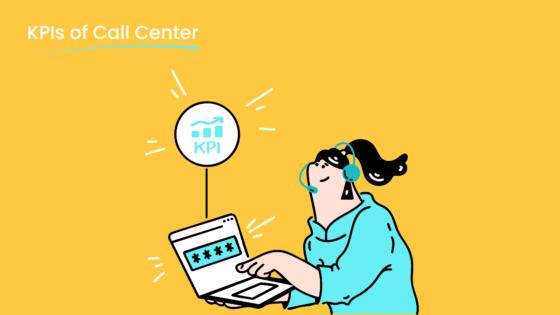
Tracking call center agent performance metrics is vital for maintaining exceptional customer service and achieving business goals. When you monitor key metrics like Average Handle Time (AHT) or First Contact Resolution (FCR), you gain insights into how efficiently agents resolve customer issues. For example, a high FCR rate reflects an agent's ability to address concerns effectively on the first contact, boosting customer satisfaction and loyalty. Metrics like Customer Satisfaction Score (CSAT) and Average Speed of Answer (ASA) further reveal how well your team meets customer expectations. By leveraging solutions like Sobot’s Voice Call Center, you can streamline tracking processes, analyze performance data, and enhance agent productivity. This approach ensures your call center operates smoothly while driving business growth.
Why Call Center Agent Performance Metrics Matter
Enhancing Customer Satisfaction
Tracking call center agent performance metrics plays a crucial role in improving customer satisfaction. When you monitor metrics like First Call Resolution (FCR), you can identify how effectively agents resolve issues during the first interaction. Research from SQM highlights that a 1% improvement in FCR leads to a 1% increase in customer satisfaction and a 1% reduction in operating costs. Companies like T-Mobile and Verizon have achieved significant improvements in customer satisfaction by focusing on FCR, with T-Mobile reporting a 20% increase. These results demonstrate how refining call center performance directly impacts the customer experience.
By leveraging tools like Sobot’s Voice Call Center, you can track FCR and other contact center metrics in real time. Features such as intelligent IVR and AI-powered voicebots help streamline issue resolution, ensuring customers leave interactions feeling valued and satisfied.
Boosting Agent Productivity
Call center productivity depends heavily on how well agents perform. Monitoring metrics like Average Handle Time (AHT) and call quality scores provides insights into areas where agents may need additional training. According to industry data, 40% of non-FCR calls are due to agent-related issues. Addressing these gaps through targeted coaching can significantly enhance agent performance.
Sobot’s unified workspace simplifies agent workflows by consolidating customer data and communication channels into one platform. This efficiency allows agents to focus on resolving customer concerns rather than navigating fragmented systems. Motivated and well-supported agents deliver better service, which boosts overall call center productivity.
Driving Business Growth
Effective tracking of call center agent performance metrics contributes to long-term business growth. Metrics like Net Promoter Score (NPS) and Customer Satisfaction Score (CSAT) are critical indicators of customer loyalty and brand reputation. Research shows that companies measuring these metrics experience improved operational efficiency and increased revenue. For example, a 2020 survey revealed that good customer service reduces customer turnover and enhances financial performance.
Sobot’s solutions, such as its AI-powered analytics, provide actionable insights into these metrics. By optimizing agent performance and improving customer satisfaction, your business can achieve sustainable growth and maintain a competitive edge.
Key Call Center Agent Performance Metrics to Track
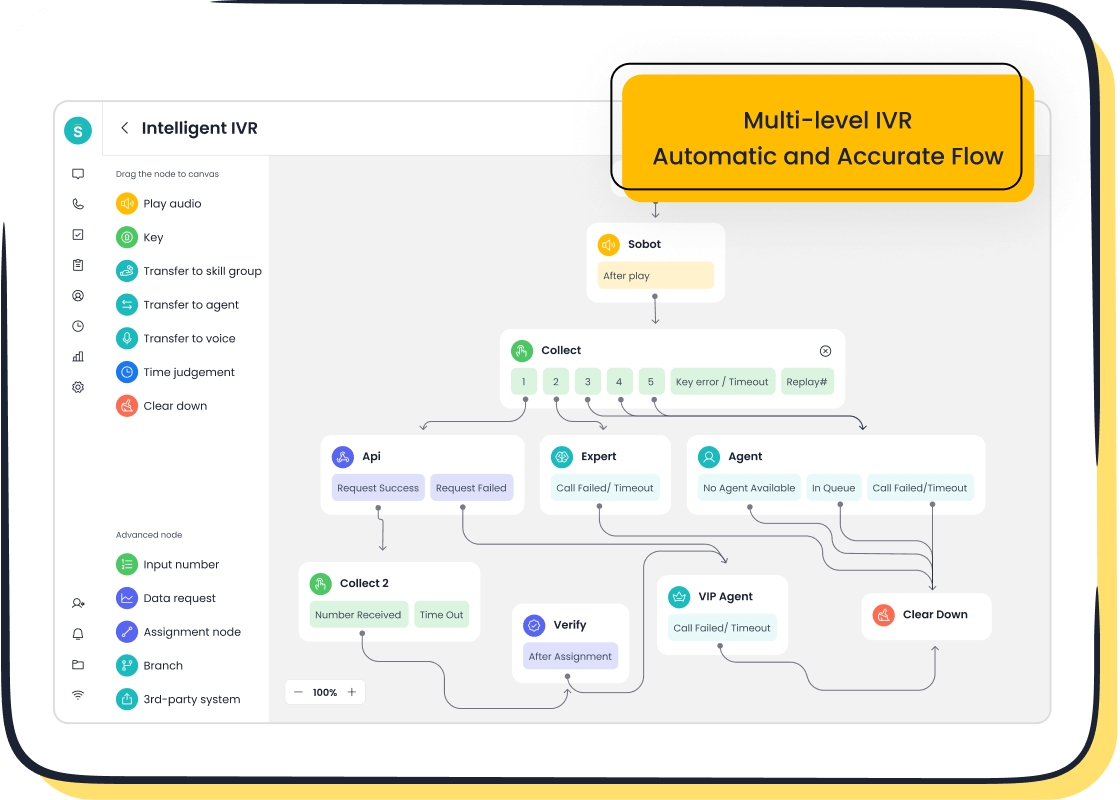
Tracking the right call center agent performance metrics ensures your team delivers exceptional service while maintaining operational efficiency. Below are three critical metrics that every call center should monitor.
First Call Resolution (FCR)
First Call Resolution (FCR) measures how often agents resolve customer issues during the first interaction. This metric directly impacts customer satisfaction and operational efficiency. Studies show that for every 1% increase in FCR, customer satisfaction improves by 1%. High FCR rates also reduce repeat calls, saving time and resources.
For example, industries like healthcare and finance rely heavily on FCR to ensure seamless customer experiences. A healthcare provider resolving patient inquiries on the first call builds trust and reduces follow-up interactions. Similarly, financial institutions benefit from higher FCR rates by addressing client concerns promptly, enhancing loyalty.
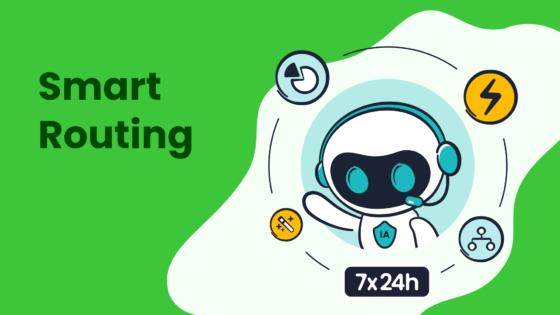
Sobot’s Voice Call Center simplifies FCR tracking with real-time monitoring and AI-powered voicebots. These tools help agents resolve issues faster by providing instant access to customer data and intelligent call routing. By integrating FCR into your agent performance dashboard, you can identify areas for improvement and boost overall call center performance.
Average Handle Time (AHT)
Average Handle Time (AHT) measures the average duration agents spend resolving customer inquiries. It includes talk time, hold time, and after-call work. Lower AHT indicates efficient call handling, but it should not compromise the quality of service.
Factors like call complexity and agent training significantly influence AHT. For instance, complex technical issues may require more troubleshooting time, increasing AHT. On the other hand, well-trained agents equipped with the right tools can resolve issues faster. A higher FCR rate also reduces AHT by minimizing repeat calls.
| Factor | Impact on AHT |
|---|---|
| Call Complexity | More complex issues require additional troubleshooting time, increasing AHT. |
| Agent Experience and Training | Well-trained agents handle inquiries more efficiently, reducing call duration. |
| First Contact Resolution (FCR) Rate | Higher FCR rates lower AHT by reducing repeat contacts for unresolved issues. |

Sobot’s unified workspace optimizes AHT by consolidating customer data and communication channels into one platform. This streamlined approach allows agents to focus on resolving issues rather than navigating multiple systems, improving both efficiency and customer satisfaction.
Customer Satisfaction Score (CSAT)
Customer Satisfaction Score (CSAT) measures how satisfied customers are with their interactions. It is typically calculated through post-call surveys where customers rate their experience. High CSAT scores indicate that your call center meets or exceeds customer expectations.
CSAT is a key performance indicator across industries like finance and healthcare. For example, a financial services company with high CSAT scores demonstrates its ability to provide reliable and efficient support. Similarly, healthcare providers with strong CSAT ratings reflect their commitment to patient care.
Sobot’s performance dashboards make it easy to track CSAT and other customer satisfaction metrics. By analyzing survey results and agent performance data, you can identify trends and implement strategies to improve the customer experience. Features like AI-powered analytics provide actionable insights, helping you maintain high CSAT scores and build lasting customer relationships.
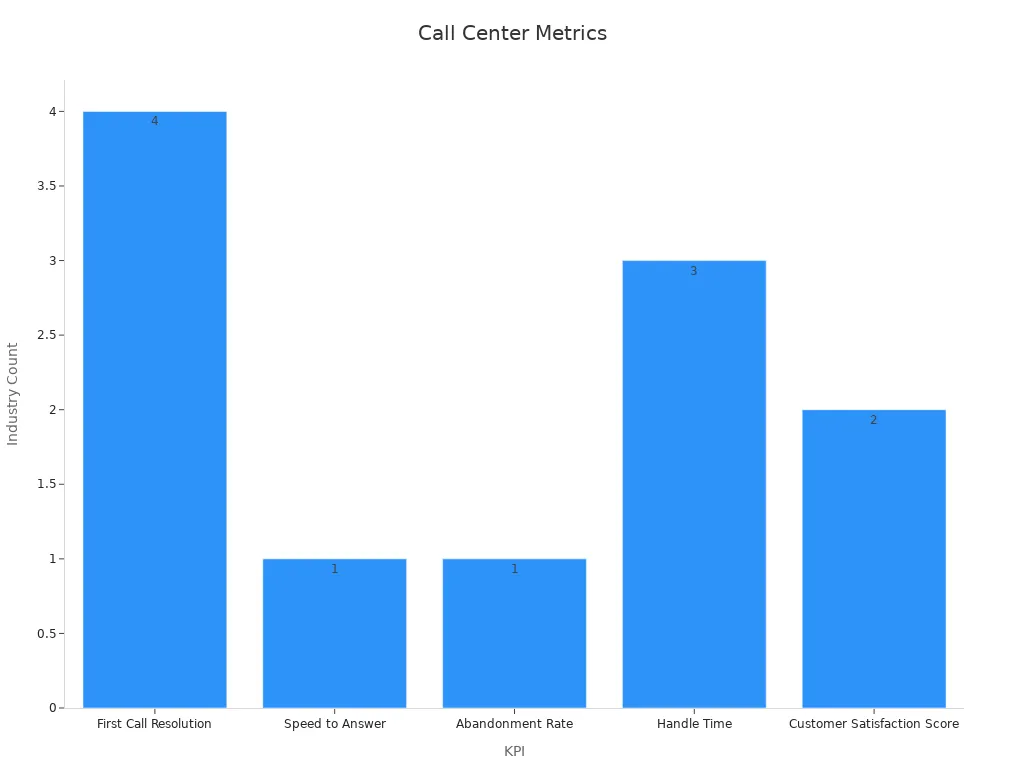
Monitoring these contact center metrics ensures your team delivers consistent, high-quality service. Tools like Sobot’s Voice Call Center and agent performance dashboards provide the insights you need to optimize operations and enhance customer satisfaction.
Net Promoter Score (NPS)
Net Promoter Score (NPS) measures customer loyalty by asking a simple question: "How likely are you to recommend our service to others?" Customers respond on a scale of 0 to 10, with scores categorized into promoters (9-10), passives (7-8), and detractors (0-6). NPS is calculated by subtracting the percentage of detractors from promoters. A high NPS indicates strong customer loyalty and satisfaction, which are critical for long-term success.
| Evidence Description | Key Insights |
|---|---|
| NPS reflects customer loyalty, satisfaction, and long-term business success. | Companies that focus on improving customer experience see increased loyalty and retention. |
| Tracking NPS provides insights into customer sentiment and retention trends. | It helps identify areas for improvement and measures both short-term satisfaction and long-term loyalty. |
| High NPS can lead to identifying loyal customer segments and improving ROI. | It supports future growth and enhances overall company success. |
Tracking NPS helps you identify loyal customers and areas needing improvement. For example, a retail company with a high NPS can focus on retaining promoters while addressing detractor concerns. Sobot’s performance dashboards simplify NPS tracking by providing real-time insights into customer feedback. These tools allow you to monitor trends and implement strategies to enhance customer loyalty and overall call center performance.
Call Abandonment Rate
Call Abandonment Rate measures the percentage of customers who hang up before speaking to an agent. High abandonment rates often indicate long wait times or inadequate staffing, which negatively impact customer satisfaction and operational efficiency. Reducing this rate is essential for improving the customer experience and maintaining call center productivity.
- High call abandonment rates negatively impact customer satisfaction and operational efficiency.
- Each abandoned call costs businesses approximately $50, leading to potential daily losses of $4,000 in sales.
- Reducing average queue time to 2 minutes can significantly decrease abandonment rates and increase revenue by about $3,000 per day.
For instance, a financial services company with a high call abandonment rate may lose potential clients due to frustration over long wait times. Sobot’s Voice Call Center addresses this issue with intelligent IVR and smart call routing, ensuring customers connect with agents quickly. By monitoring the average call abandonment rate through Sobot’s agent performance dashboard, you can optimize staffing and reduce wait times, ultimately boosting customer satisfaction.
Agent Occupancy Rate
Agent Occupancy Rate measures the percentage of time agents spend handling calls or performing related tasks compared to their total available time. This metric helps you assess how efficiently your team utilizes its resources. A balanced occupancy rate ensures agents remain productive without feeling overworked.
| Metric | Description | Importance |
|---|---|---|
| Occupancy Rate | Percentage of time agents spend on tasks versus total availability. | Indicates agent productivity and helps balance workloads. |
| Comparative Analysis | Benchmarking against competitors' KPIs. | Identifies weaknesses and informs strategic adjustments based on industry standards. |
For example, a gaming company with a low occupancy rate may face inefficiencies, while an overly high rate could lead to agent burnout. Sobot’s unified workspace optimizes agent workflows by consolidating customer data and communication channels. This approach improves agent efficiency and ensures a balanced workload. By tracking occupancy rates through Sobot’s call centre dashboard, you can maintain high call center productivity while supporting agent well-being.
Tools and Techniques for Tracking Call Center Agent Performance

Real-Time Monitoring with Sobot Voice/Call Center
Real-time monitoring is essential for maintaining high call center productivity and improving agent performance. With Sobot Voice/Call Center, you can track live interactions and identify issues as they occur. This proactive approach ensures that agents receive immediate support, enhancing customer service quality.
Sobot’s intelligent IVR and smart call routing features streamline call management. For example, team leaders can monitor calls in progress and intervene when necessary to resolve complex issues. Post-call analysis tools, such as call recordings, allow you to evaluate communication skills and provide targeted training and coaching. These capabilities not only improve agent performance but also reduce the average call abandonment rate by addressing customer concerns promptly.
Tip: Use real-time monitoring to identify patterns in agent behavior and adjust workforce management strategies accordingly. This ensures balanced workloads and prevents burnout, leading to sustained call center performance.
Performance Dashboards and Analytics
Performance dashboards are invaluable for tracking agent productivity metrics and improving call center performance. Sobot’s agent performance dashboard consolidates data from multiple channels, providing a holistic view of agent activities. You can monitor metrics like average speed of answer and customer satisfaction scores in real time, enabling precise evaluations.
| Evidence Description | Key Benefits |
|---|---|
| Real-time monitoring and reporting enhance understanding of agent behavior. | Immediate insights into interactions, enabling precise performance evaluation. |
| Data analysis identifies patterns and trends for strategic decision-making. | Aggregated data from multiple channels provides holistic performance metrics. |
| Dashboards improve customer satisfaction through efficient service. | Managers can track long-term agent performance trends for targeted training. |
Sobot’s dashboards also support workforce management by identifying high-performing agents and those needing additional support. For instance, you can use aggregated data to tailor training programs, ensuring agents develop the skills required to handle complex inquiries. This approach boosts customer service quality and enhances call center productivity.
AI-Powered Insights for Contact Center Metrics
AI-powered insights revolutionize how you analyze contact center metrics. Advanced algorithms process large volumes of data in real time, uncovering patterns that manual methods often miss. Sobot’s AI tools provide actionable insights that help you refine agent workflows and improve customer satisfaction.
By employing predictive analytics, you can forecast future outcomes based on historical data. This allows you to adopt proactive strategies, such as identifying agents who need additional training before performance issues arise. AI-driven solutions also streamline processes, reducing evaluation time and empowering agents to deliver higher-quality service.
For example, Sobot’s AI-powered voicebots analyze interactions and provide immediate feedback to agents. This real-time support enhances communication skills and ensures customers receive exceptional service. By integrating AI tools into your call centre dashboard, you can optimize operations and maintain high levels of customer satisfaction.
Best Practices for Improving Agent Performance
Setting Clear and Achievable Goals
Establishing clear and measurable goals is essential for improving call centre agent performance. Goals aligned with the SMART framework—specific, measurable, achievable, relevant, and time-bound—help agents focus on their objectives. For example, setting a target to improve First Call Resolution (FCR) by 5% within three months provides clarity and motivation. This approach fosters accountability and ensures progress tracking.
| Best Practice | Description |
|---|---|
| Performance Management System | Uses metrics like CSAT and FCR to monitor and improve agent performance. |
| Establishing Clear Metrics | Defines measurable KPIs to identify areas for improvement. |
| Agent Coaching | Focuses on coaching effectiveness, improving FCR rates by over 50%. |
Sobot’s agent performance dashboard simplifies goal-setting by providing real-time insights into call handling metrics. These dashboards enable you to monitor progress and adjust strategies, ensuring agents stay on track.
Leveraging Sobot's Unified Workspace for Efficiency
A unified workspace enhances call center productivity by streamlining workflows. Sobot’s platform consolidates customer data, communication channels, and quality assurance metrics into one interface. This integration reduces the time agents spend switching between systems, allowing them to focus on resolving customer issues.
For instance, Sobot’s unified workspace supports workforce management by optimizing agent schedules and workloads. This ensures balanced occupancy rates, preventing burnout while maintaining high productivity. By leveraging this tool, you can improve both agent efficiency and customer satisfaction.
Providing Regular Training and Feedback
Regular training and feedback are critical for sustaining high-quality performance. Studies show that tailored training programs can improve CSAT by 15% and FCR by 25%. Personalized coaching sessions, combined with real-time feedback, help agents refine their skills and address weaknesses effectively.
| Metric | Improvement Percentage |
|---|---|
| CSAT | 15% |
| Handle Time | 20% |
| First Call Resolution | 25% |
| Agent Retention | 30% |
Sobot’s performance dashboards provide actionable insights for creating customized training plans. These tools allow you to measure coaching effectiveness and continuously refine strategies, ensuring agents deliver exceptional service.
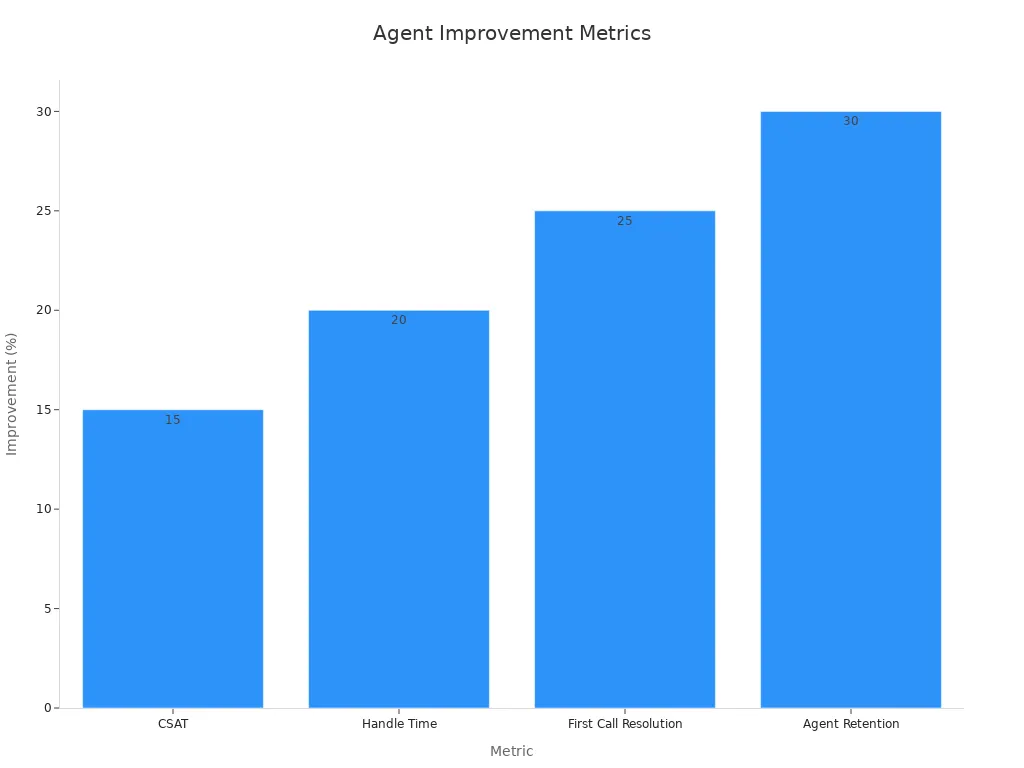
Tip: Pair training with real-time feedback to reinforce learning and boost agent confidence.
Integrating Qualitative and Quantitative Data
Combining qualitative and quantitative data provides a complete picture of call centre agent performance. Quantitative data, such as metrics like Average Handle Time (AHT) or First Call Resolution (FCR), offers measurable insights into efficiency and productivity. On the other hand, qualitative data, like customer feedback or agent observations, reveals the human side of performance, including communication skills and empathy. Together, these data types create a balanced approach to understanding and improving call center operations.

For example, analyzing survey responses alongside call abandonment rates can help you identify patterns. If customers frequently mention long wait times in feedback, and abandonment rates are high, the issue becomes clear. Addressing this with solutions like Sobot’s Voice Call Center ensures faster call routing and better customer experiences. Features like intelligent IVR and real-time monitoring allow you to act on both data types effectively.
Research supports this integration as a robust strategy for analyzing call center performance. Techniques like triangulation and mixed methods combine the strengths of both data types, ensuring a thorough understanding of challenges and opportunities. By using tools that consolidate these insights, you can make informed decisions to enhance agent productivity and customer satisfaction.
Sobot’s unified workspace simplifies this process by merging customer data and performance metrics into one platform. This integration allows you to track quantitative metrics while reviewing qualitative feedback, ensuring no detail is overlooked. For instance, you can monitor FCR rates while analyzing customer comments about resolution quality. This dual approach helps you identify areas for improvement and implement targeted strategies.
Tip: Use both data types to create actionable insights. Quantitative metrics highlight trends, while qualitative feedback adds context, ensuring your call center operates efficiently and meets customer expectations.
Overcoming Challenges in Tracking Call Center Agent Performance
Ensuring Data Accuracy and Reliability
Maintaining accurate and reliable data is a common challenge in call centers. Misinterpreting reports can lead to poor decisions, while outdated systems often hinder effective monitoring. Additionally, agents may lack the training needed to ensure consistent performance. These issues can disrupt operations and reduce customer satisfaction.
To overcome these challenges, you can implement several strategies:
- Use compliance policies to guide operations and ensure clarity.
- Conduct regular coaching sessions to improve agent performance.
- Leverage advanced technology to automate and simplify data collection.
Sobot’s Voice Call Center offers real-time monitoring and AI-powered analytics to enhance data accuracy. These tools help you track metrics like First Call Resolution (FCR) and Average Handle Time (AHT) with precision. By integrating these solutions, you can ensure reliable data and make informed decisions.
Addressing Resistance to Performance Monitoring
Agents may resist performance monitoring due to concerns about micromanagement or job security. This resistance can hinder your efforts to improve call centre agent performance. Building trust and transparency is essential to address this issue.
Start by explaining the purpose of monitoring. Emphasize how it benefits both agents and customers. For example, regular feedback sessions can highlight strengths and identify areas for growth. Sobot’s unified workspace simplifies this process by providing clear insights into agent activities. This transparency fosters a supportive environment, encouraging agents to embrace performance tracking.
Simplifying Technology Integration with Sobot Solutions
Integrating new technology can feel overwhelming, especially when managing multiple systems. Sobot simplifies this process with seamless integration capabilities. For instance, its unified platform consolidates customer data and communication channels, reducing complexity.
Case studies highlight the benefits of Sobot’s solutions. One example shows a 22.2% increase in self-service capabilities, leading to a 97% Customer Satisfaction Score (CSAT). Another case demonstrates a 20% reduction in inbound discussion volume, improving operational efficiency. These outcomes illustrate how Sobot’s tools streamline processes and enhance performance tracking.
By adopting Sobot’s solutions, you can overcome integration challenges and focus on delivering exceptional service.
Tracking call center agent performance metrics is essential for delivering exceptional customer service and achieving business goals. Metrics like First Call Resolution (FCR) and Customer Satisfaction Score (CSAT) directly impact customer loyalty and operational efficiency. For example, leading call centers achieve FCR rates above 80%, reflecting their effectiveness in resolving issues promptly.
Sobot Voice/Call Center simplifies performance tracking with tools like real-time monitoring and AI-powered analytics. These features help you optimize Average Handle Time (AHT), reduce operational costs by up to 30%, and improve Net Promoter Scores (NPS) by 15%.
| Metric | Impact on Organizational Success |
|---|---|
| First Call Resolution (FCR) | Leading call centers achieve rates above 80%, indicating effectiveness and customer satisfaction. |
| Average Handle Time (AHT) | High AHT can reveal inefficiencies, impacting overall performance. |
| Customer Satisfaction Scores (CSAT) | Well-run centers maintain scores around 85%, reflecting strong issue resolution and customer loyalty. |
| Operational Cost Reduction | AI tools lead to cost reductions of 20%-30% by automating tasks. |
| Agent Turnover Reduction | Remote work options have reduced turnover by 10%, lowering recruitment costs. |
| Net Promoter Score (NPS) | AI-supported centers report NPS that are 15% higher than others. |
| Speed of Service | 70% of customers say service speed affects brand perception. |
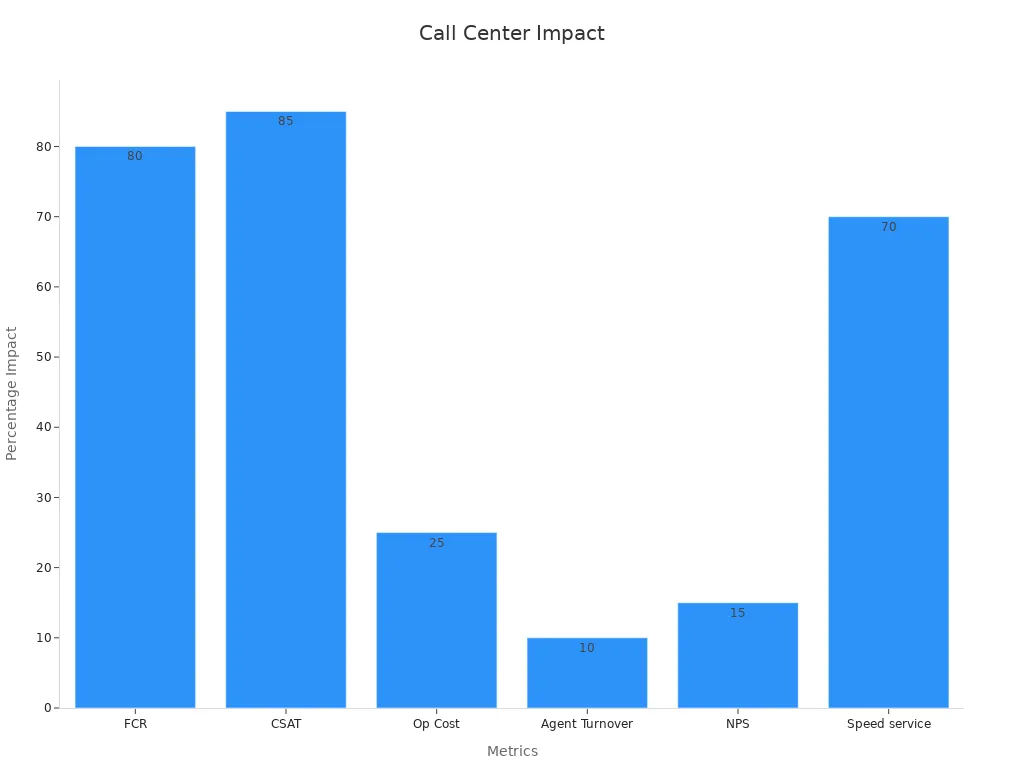
By adopting strategies like setting clear goals, leveraging Sobot’s unified workspace, and integrating qualitative and quantitative data, you can continuously improve agent performance. Start optimizing your call center today to enhance customer satisfaction and drive business growth.
FAQ
What are call center agent performance metrics?
Call center agent performance metrics measure how well agents handle customer interactions. Metrics like First Call Resolution (FCR) and Average Handle Time (AHT) help you evaluate efficiency and customer satisfaction. Tools like Sobot’s Voice Call Center simplify tracking these metrics with real-time monitoring and AI-powered analytics.
Why is First Call Resolution (FCR) important?
FCR measures how often agents resolve issues on the first call. A 1% increase in FCR improves customer satisfaction by 1% and reduces operating costs. Sobot’s intelligent IVR and smart call routing enhance FCR by connecting customers to the right agents quickly.
How does Sobot improve call center productivity?
Sobot’s unified workspace consolidates customer data and communication channels into one platform. This reduces time spent switching systems, allowing agents to focus on resolving issues. Features like AI-powered voicebots and real-time monitoring further enhance efficiency and reduce Average Handle Time (AHT).
What tools can help track call center metrics?
Performance dashboards and AI-powered analytics are essential tools. Sobot’s Voice Call Center offers these features, enabling you to monitor metrics like Customer Satisfaction Score (CSAT) and Net Promoter Score (NPS) in real time. These insights help you optimize operations and improve customer experiences.
How can you reduce call abandonment rates?
High call abandonment rates often result from long wait times. Sobot’s Voice Call Center addresses this with intelligent IVR and smart call routing. These features connect customers to agents faster, reducing wait times and improving satisfaction. For example, reducing queue times to 2 minutes can lower abandonment rates significantly.
See Also
Enhancing Call Center Efficiency Through Effective Monitoring
Essential Strategies for Effective Call Center Quality Management
Best Call Center Analytics Tools to Use in 2024
